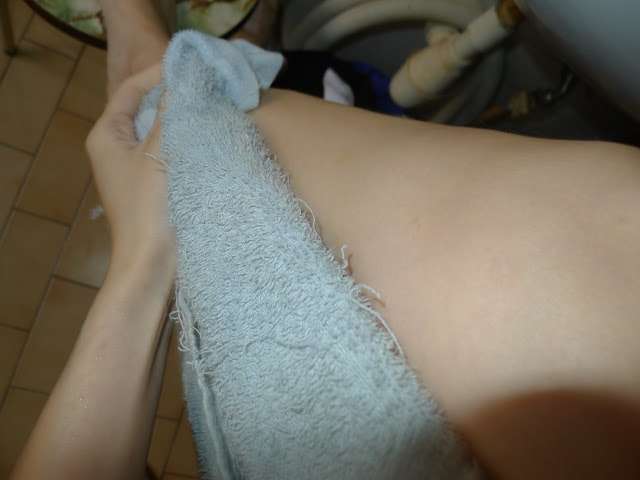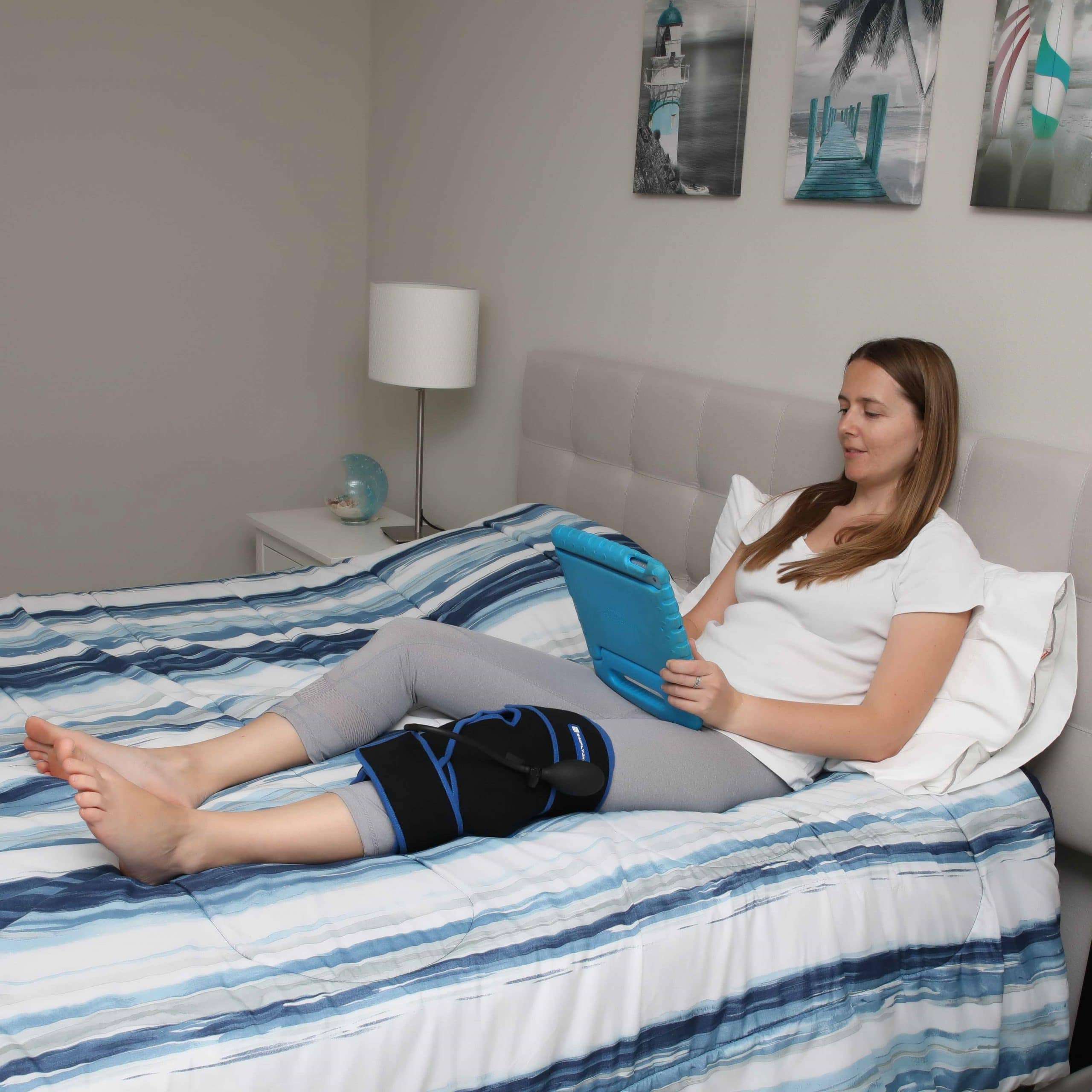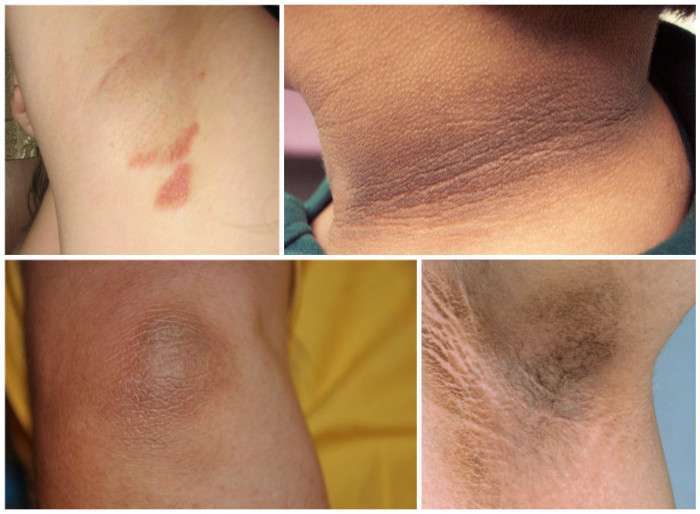How Do You Remove Fluid From Knee Joints Naturally
Natural home remedies for removing fluid from knee joints include the RICE protocol for reducing swelling. Other treatments include herbal supplements and alternative forms of physical therapy, as stated by Healthline.
Fluid builds in the knee as a result of several different factors. Injuries such as fractures, ligament or meniscus tears, and overuse trauma all draw fluid to the knee. Such conditions and diseases as osteoarthritis, rheumatoid arthritis, gout, infection, bursitis, bleeding disorders, tumors and cysts all lead to fluid gathering around and inside the knee joint, according to Mayo Clinic.
When carrying out the RICE protocol, sitting on a couch, elevating the feet on a cushion, and applying a bag of ice or frozen small vegetables to the knee reduces swelling. Using a compression bandage while going about normal daily activities applies pressure to fluid, sending it out of the joint. Some natural supplements that help reduce knee swelling include ginger extract, willow bark, glucosamine and chondroitin sulfate. Ginger extract and willow bark reduce pain and inflammation, and chondroitin sulfate and glucosamine address more severe cases of pain and swelling. Tai chi is an alternative form of physical therapy that boosts flexibility and balance. It also increases range of motion, fighting the tendency to remain sedentary that accompanies pain and allows fluid to build as well, notes Healthline.
Seeing A Doctor Is Important
Because of the detrimental and debilitating effect that knee synovial fluid accumulation can have on a patients life, it is essential to do everything possible to avoid it in the first place. Caution is always recommended when practicing any brusque physical activity. Weight management is also a valid preventative technique as excess weight puts an unnecessary strain upon the joints of the body.
It is also important to listen to your bodys signals and warnings. If you feel pain or discomfort on the knee joint, stop whatever it is you are doing and give your body a chance to rest. Doing this will significantly reduce the risk of suffering any eventual pain, stiffness, and swelling.
REFERENCES:
Can Fluid On The Knee Get Worse
Yes. Its important to get a correct diagnosis of why your knee is swollen and follow proper treatment. A bacterial infection could spread and lead to permanent cartilage damage. If the problem is an internal tear, youre likely to have long-term, progressively more debilitating pain and loss of mobility if its not treated.
Also Check: How To Get Rid Of Fat Around Knees
Types Of Fluid In Knee
Our knees are complex, and its possible to injure the ligaments, tendons, muscles, or bones in the joint. If untreated, fluid in your knee can eventually harm the various structures of the knee. To understand your condition, you should familiarize yourself with the different types of fluid that may be found in the knee:
-
Blood
Serious injury to the knee can cause an excessive amount of blood to flood into the joint. This condition is known as hemarthrosis and requires urgent medical care.
-
Joint Fluid
Certain conditions may cause the body to produce too much joint fluid, which leads to knee effusion.
-
Other Body Fluids
When parts of the body are inflamed or injured, the natural reaction is for that area to swell with fluids that fight bacteria and promote healing.
What Causes Fluid Build Up In The Knee

I have learned that there are numerous causes of knee effusion. And depending on the main underlying condition knee effusion might exhibit different types of symptoms including change or skin color around the knee and pain.
Nonetheless, the main conditions that I have learned of include the following conditions.
Recommended Reading: What Do You Do For Water On The Knee
When To Consider Knee Drainage
Knee swelling can be a painful, functionally debilitating condition and should not be ignored. Many cases of knee swelling can be resolved with rest, ice, physical therapy, and anti-inflammatory medication. However, if the swelling begins to restrict movement or becomes increasingly painful, you may be eligible for knee drainage.
Knee drainage can both diagnose the source of swelling and provide effective pain relief and improved mobility. Moreover, it is a simple in-office procedure requiring very little downtime. If you are experiencing pain and swelling in your knee, drainage may be the most effective option to get you back to performing your daily activities pain-free.
Carmelo Anthony Finds Relief After Knee Drainage
Most people are familiar with the traditional solution to a swollen knee: wrap some ice around it, rest, and allow the body to recover naturally. But what if this tried and true therapy fails? After a month-long struggle with swelling in his right knee, superstar forward for the New York Knicks, Carmelo Anthony, finally had his knee drained. Within 24 hours of the procedure, Anthony publicly expressed his regrets at not undergoing the knee drainage sooner.
Fearing that his knee swelling was the result of cartilage or ligament damage, which could require surgery, Anthony postponed knee drainage for weeks while attempting to rest and gently rehabilitate his knee. He sat out six games and offered an underwhelming performance in two more before deciding to have the knee drained. The procedure revealed that the pain and stiffness were actually due to fluid from a strained hamstring draining down and putting pressure on the knee.
Anthony has since returned to the court pain-free, helping the Knicks battle to maintain their seed for the upcoming NBA playoffs. If not for knee drainage, he might still be watching his team play from the sidelines. If you are experiencing pain or swelling in the knee and want to learn more about knee drainage, feel free to schedule a consultation with Dr. Millstein.
Also Check: Can You Rebuild Cartilage In Your Knee
When To See A Doctor
A swollen knee is a common occurrence. If mild, it can go away on its own after some good rest. However, if it persists for more than three days or gets severe, it could be a serious underlying condition. Medical attention, in this case, will be necessary. Also, see a doctor if your knee prevents you from doing things like bending, walking, or sitting.
Using heat worsens the condition? Therapeutic heat is not recommended in reducing inflammation or swelling.
How Serious Is A Baker’s Cyst
Baker’s cysts are fluid-filled sacs caused by excess knee-joint fluid.
This common condition occurs when excess fluid produced by the lining of the knee joint pushes through the back part of the joint capsule , forms a cyst and protrudes into the back area of the knee, known as the popliteal fossa. A Baker’s cyst may also be referred to as a “popliteal cyst.”
If you have osteoarthritis or rheumatoid arthritis, you may be familiar with this painful condition. Fortunately, there are treatment remedies available for Baker’s cysts, depending on the cause.
Also Check: How To Lighten Your Knees Overnight
Diagnosing A Fluid In The Knee
Visually, a knee with fluid will usually look swollen and puffy. If your physician suspects that fluid in the knee may be an issue, he or she may extract some fluid from the knee using a sterile syringe to assess what type of fluid is present. A lab test may be requested to test for the presence of infection or other types of issues. Your doctor may also suggest an imaging test, such as X-ray , MRI or ultrasound which will help him or her evaluate the situation.
Can There Be Complications If I Dont Treat A Bakers Cyst
Not all Bakers cysts are treated. You might feel that the pain is mild and leave it alone. The cyst might go away on its own if it isnt treated. However, there are other complications that can happen if a Bakers cyst is left untreated, including:
- The pain getting worse.
- The cyst increasing in size.
- The cyst bursting, causing bruising in the lower leg.
If the cyst doesnt go away, reach out to your healthcare provider. Its important to get the right diagnosis and make sure it is a Bakers cyst. This condition could be mistaken for something more serious like a tumor or artery aneurysm, which is a medical emergency.
You May Like: How To Whiten Knees And Elbows
What Is Knee Aspiration And Injection
Knee aspiration and injection is introduction of medications into the joint space following fluid aspiration. Medications like steroids, antibiotics or other medications may be instilled into the knee joint depending on the cause and severity of the condition.
Local steroid injection can provide considerable relief, reduce discomfort and is often found helpful in acute exacerbations of chronic joint conditions that cause large knee effusion. Sometimes, after the injection, the joint may get inflamed for which appropriate treatment is given.
Ask About Knee Aspiration And Injections

When a knee effusion is severe or persists for a prolonged time, your doctor may recommend removing the excess fluid through a needle inserted into the joint. This procedure, called arthrocentesis, will reduce the swelling. It may also help determine the cause of the effusion, as your doctor will likely send a sample of the fluid to the lab for analysis.
Your doctor may also inject corticosteroid medication into your knee joint, which usually produces quick symptom improvement. This type of injection is generally performed immediately after fluid is removed during arthrocentesis.
Read Also: Is Nano Knee Covered By Medicare
What Is Joint Aspiration
Joint aspiration is a procedure that sucks fluid from your knee, hip, shoulder, or other joints. Your doctor may do it to help with swelling and fluid related to an injury, infection, or another health condition. Joint aspiration can also help to diagnose arthritis or other joint problems. Your doctor looks at the fluid to find out what type of arthritis you have, like gout or rheumatoid arthritis.
If you have arthritis, bursitis, or tendinitis, getting rid of extra fluid that’s built up inside your joints can help relieve pain and let you move more easily. Sometimes your doctor might inject medicine after the extra fluid is gone. The most common ones are anti-inflammatory corticosteroids.
If you need joint aspiration, your doctor may do other procedures, too. These include:
- X-ray
- Arthrography
What Is The Best Way To Get Rid Of Fluid On The Knee
This is purely situational. Whats best for you may be different for someone else.
- The RICE method is essentially first-aid for fresh injuries.
- Oral over-the-counter medications like pain relievers and NSAIDs are solid options but topical salicylates may be better if the former give you gastric distress.
- Corticosteroids may also be prescribed if OTC options dont work or if the knee swelling is caused by autoimmune disorders
- Your doctor may also order antibiotics if bacterial infections are what caused the swelling and knee pain.
- Knee joint aspiration can also be an option to quickly evacuate the water inside your knees.
- Minimally invasive and extensive knee surgeries may be required if structures in and around your joint need repair.
Recommended Reading: Stiffness In Knees After Sitting
Home Remedy To Remove Fluid Around The Knee
The knee is the largest joint in the body and is prone to injury. It endures tremendous stress, and a person does not have to be a sports enthusiast to injure their knee. Most often, when an injury occurs, there is pain and swelling. Occasionally, fluid can build up around the knee. Knowing how to get rid of this using simple home remedies can really help.
If you are experiencing serious medical symptoms, seek emergency treatment immediately.
How To Remove Fluid From Knee Joints Naturally
Fact Checked
Water on the knee is a swelling of knee joint caused by too much fluid 12. According to the Mayo Clinic, symptoms for water on the knee include pain, swelling, bruising and stiffness 12. Causes include injury, arthritis, grout and infection. When swelling on the knee is caused by a excess fluid buildup, some at-home remedies can ease your symptoms and get the swelling down to a manageable level.
If you are experiencing serious medical symptoms, seek emergency treatment immediately.
Cut down the activity that makes the swelling worse. For example, if your knee swells when cleaning the house, let the dust build up for a few weeks and allow your knee to rest a dirty house is better than a damaged knee.
Apply ice to the knee for 20 minutes every two hours. Ice packs can be purchased from your local drug store and come with a protective wrapper. For an easy homemade ice pack, use a large bag of frozen peas or cranberries–just make sure not to eat them afterward.
Elevate your knee above your heart whenever possible. If you use a computer, switch to a laptop. If you like to watch TV, sit with your leg on top of the couch.
Wrap your knee lightly with an elastic bandage. Another alternative is to purchase a surgical stocking from a pharmacy. A non-prescription strength surgical stocking will apply even pressure to your entire leg, and reduces the danger of wrapping your knee too tightly.
Warnings
Also Check: Is Nano Knee Covered By Medicare
What Is The Recovery Period Following Knee Aspiration
In most cases, removal of excess fluid provides great relief in reducing swelling, pain and also improves joint movement. Further medications and joint compression helps to prevent recurrence. While improvement continues complete relief may be obtained in few weeks to months depending on the underlying cause of knee swelling. In some cases appropriate repair procedures may have to be performed.
It is important to follow medical advice regarding rest, movement of legs and other activities. It is advisable to avoid strenuous activities for a few days after the procedure. Medical opinion should be sought if there is redness, soreness, excessive pain, bleeding or oozing from the aspiration site, fever within few days of the procedure.
When To See A Doctor And Medical Treatment Options
When to See a Doctor
If you have tried the above-mentioned measures at home and nothing seems to work than probably, its time to see a healthcare professional. If your knee is still swollen and doesnt look better at all, then seeing a doctor is necessary. Also, you must see a doctor in cases when you notice signs of an infection such as redness, hotness of the affected knee and even high temperature.
How to get rid of fluid on the knee? It is always a good idea to consult a healthcare professional immediately after a knee injury or in cases when your knee starts swelling without a reason. A workup in such cases includes:
- Complete medical history and physical examination of the affected knee. Your doctor will want to know about the symptoms you noticed or how the injury occurred, when the symptoms started or when the injury occurred, recent activities, past injuries, any surgeries or other medical condition.
- X-ray of the affected knee, especially in cases of an injury to reveal any broken bone or dislocated bone
- Ultrasound of the affected knee to reveal any abnormalities in the bones, ligaments, tendons, and surrounding tissue
- MRI providing a better visualization of the knee structures
- Joint aspiration collecting some knee fluid for further analysis with the help of a needle
Depending on the findings, proper treatment is recommended or you might be referred to an orthopedist for further evaluation.
Treatment
Commonly recommended treatments include:
You May Like: Is Nano Knee Covered By Medicare
Natural And Medical Ways To Remove Knee Fluid
A trauma to the knee, a ligament tear, arthritis, infections or even an overuse of the knee often leads to an accumulation of fluid around the knee joint. If this occurs, the affected knee will be swollen and appear larger than the other knee, painful to touch and in movement, stiff, bruised, etc. How to get rid of fluid on the knee? Depending on the underlying cause, you can get rid of excess fluid on the knee with at home treatments or medical treatments prescribed to you by a healthcare professional.
How Is A Bakers Cyst Diagnosed

You need a professional medical exam to diagnose a Bakers cyst. During your appointment, your healthcare provider may do several tests to both confirm the Bakers cyst and figure out what might be causing it, including:
- Taking a medical history: Your healthcare provider will ask you about any previous injuries you may have had to your knee and go over your entire medical history.
- X-ray: This test wont necessarily show the Bakers cyst itself, but it can be used to see if you have arthritis in your knee. Arthritis is one of the possible causes of a Bakers cyst.
- Magnetic resonance imaging scans: An MRI uses magnetic waves instead of X-rays to show detailed images inside the body. This test can give your provider even more information about what might be causing the Bakers cyst.
- Ultrasound: A simple and painless test, an ultrasound uses sound waves to determine if the lump is solid or fluid.
Read Also: Cellulite Above Knees
What Effects Does Fluid On The Knee Have
Since it results in knee inflammation of swelling, fluid on a knee joint may easily limit knee flexibility and also the functionality.
For instance, you may find it difficult to even bend or straighten your leg fully or completely. Indeed research has it that a swollen knee joint may only bend 15 to 25 degrees while your leg is at rest.
In addition to that, fluid on the knee might also leave you with severe pain. If left unattended, fluids that accumulate around your knee cap will cause pain. Eventually, you will be unable to settle due to the discomfort.
In the worst-case scenario, fluid retention around the knee will even prevent you from having a good night sleep.